Do-it-yourself vision therapy is currently an exciting topic of discussion in the strabismus and lazy eye world. With new technologies emerging and becoming more readily available to the public, it’s an interesting debate. After 4 years in vision therapy to correct my eye turn and gain stereo vision, I often look back and wonder, ‘Could I have done it on my own? Did I really need to pay thousands of dollars for the guidance from my optometrist?’
So what’s the answer? Does DIY vision therapy work for strabismus? Absolutely! With the correct tools, exercises, knowledge and drive, stereo vision can be achieved for any patient. Unfortunately, it will be about as easy as constructing a 50 foot bridge across a forest creek using YouTube and engineering textbooks. Possible, but quite challenging.
For free downloads, my course and to schedule over zoom with me, head over HERE.
For everyone else, let us begin with a little personal story, I promise I will get to vision therapy.
About 15 years ago, each of my siblings was gifted a gorgeous lot of land in the valley of the Teton Mountain Range in Wyoming. While gorgeous, it had one minor problem. It wasn’t accessible. Perched in a meadow on the edge of a steep, foresty drop-off down to the creek, there was no bridge or road that allowed us to actually get to the property.
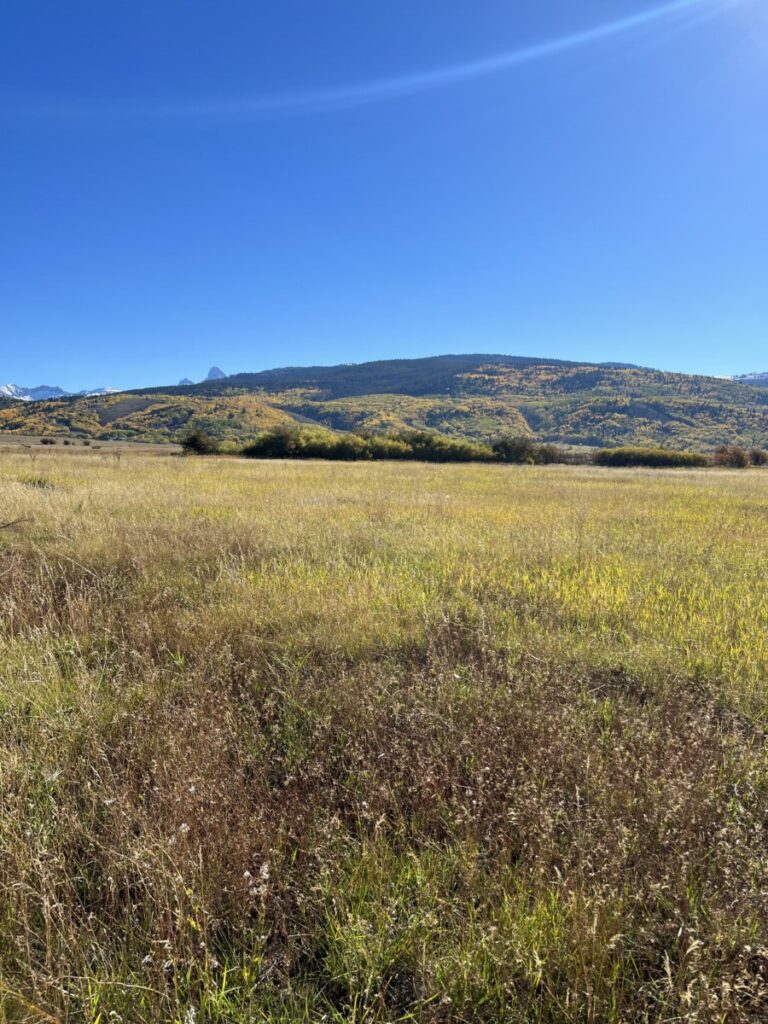
With hopes of building cabins, it was decided, five years ago, to build a bridge to reach the properties.
In my mind, we would need to build up the edges of the creek, then get some sort of strong wood or metal to put across the creek to get to the other side. It would be tough, but we could do it. I wasn’t completely wrong…well, actually I was.
My brother and dad, both engineers, recognized that it was much more complicated. After extensive measures were taken to get permits and plans drawn up that would allow access while preserving the beautiful forest and creek, a process that took years, construction was started. These are the 8 simple steps we took to build that bridge.
Step one: Build the frame out of rebar for the concrete foundation. What?!? I literally had no idea what we were building, to be honest. It was this point that I started questioning my dad and brother. What were we building, and why so much rebar?
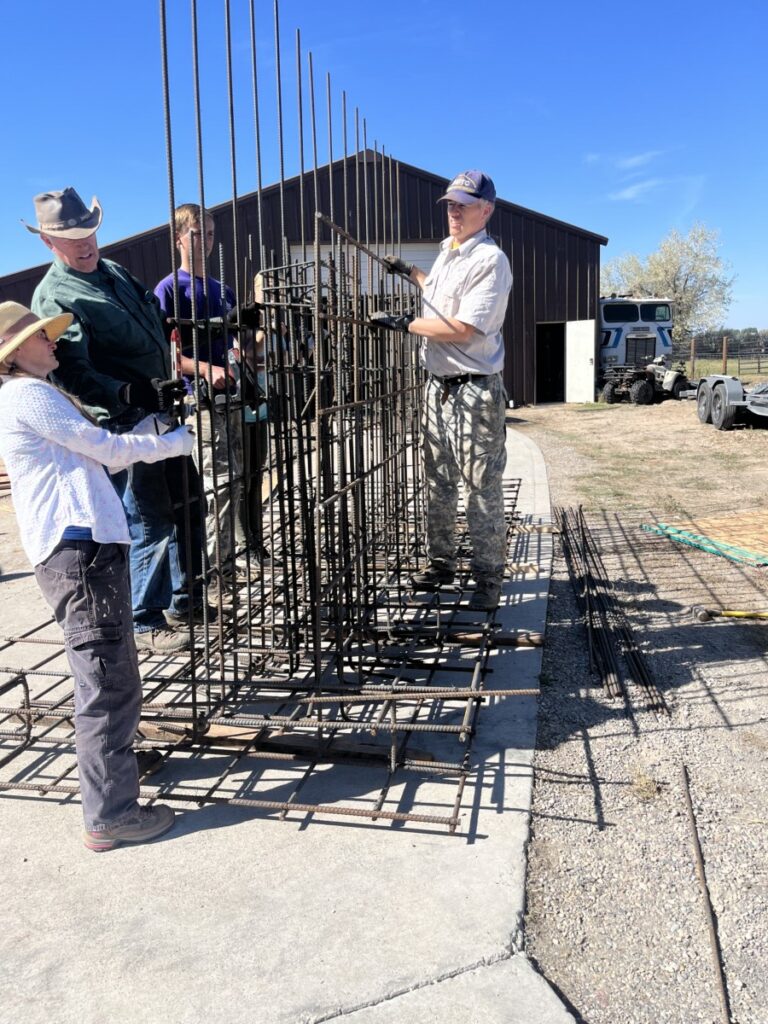
Step 2: Transport the metal mass to the location and build forms around it so that concrete could be poured. How did they figure out how deep to dig the holes? Were they going to be level? How would we get all the way across? I started realizing that this was an art and SO much more complex than I had realized.
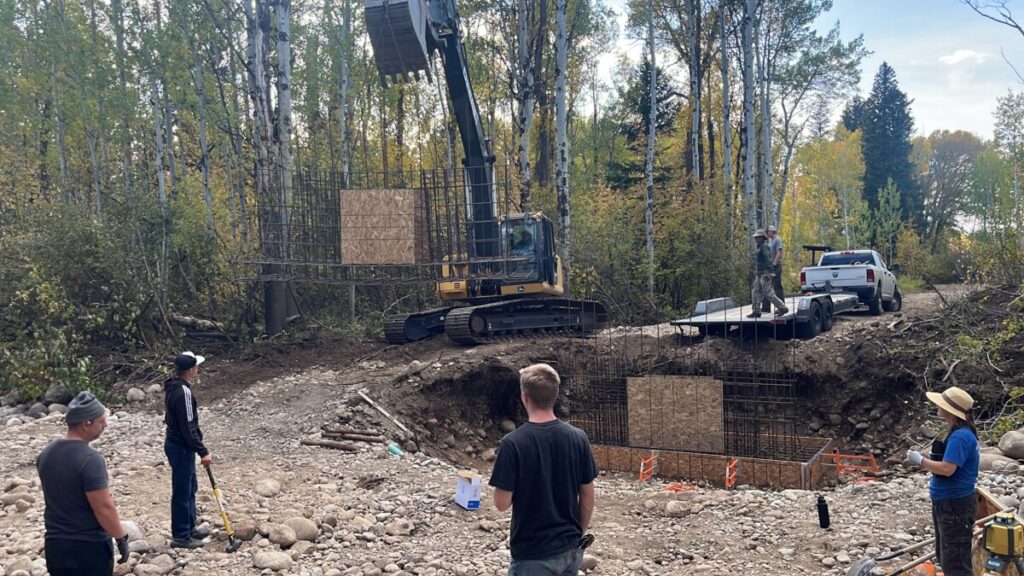
Step 3: More concrete, build more forms. I started seeing, at this point, that this was going to provide the foundation for the bridge. It seemed so sad that you wouldn’t even be able to see our HOURS and DAYS of work because it would be buried deep in the ground below the bridge.
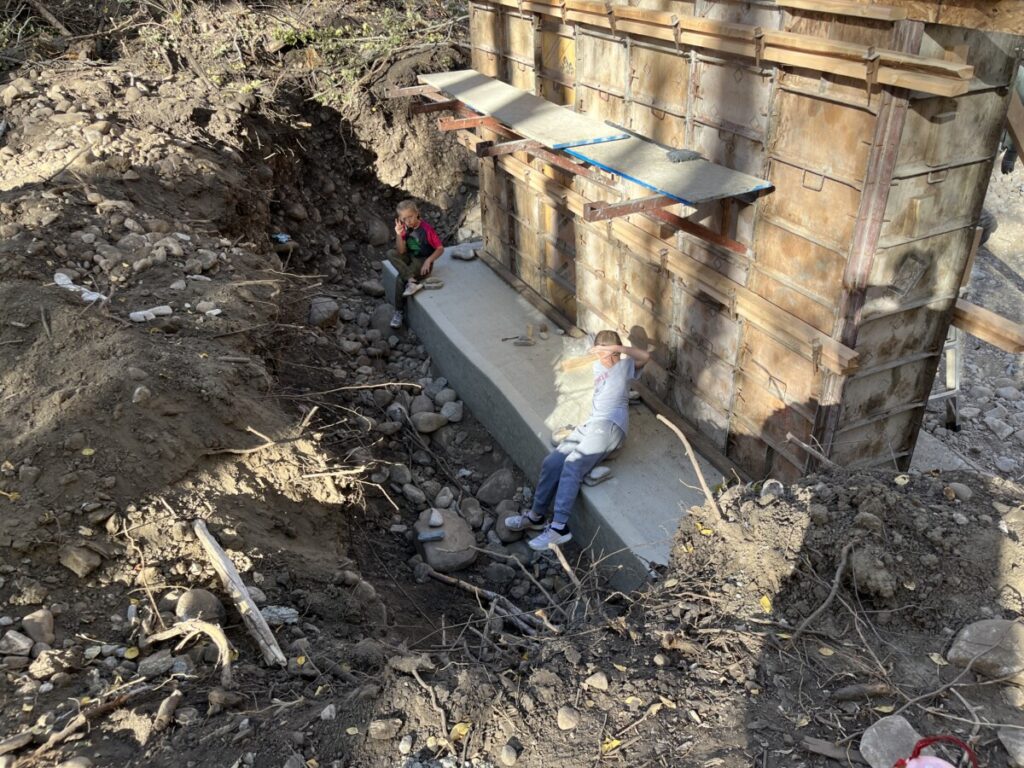
Step 4: Next was putting together and filling gabians to form a retaining wall to protect the foundation from the fast moving water of the creek. Luckily, the kids and I were experts at helping with this part! We filled those cages with rocks with all our hearts!
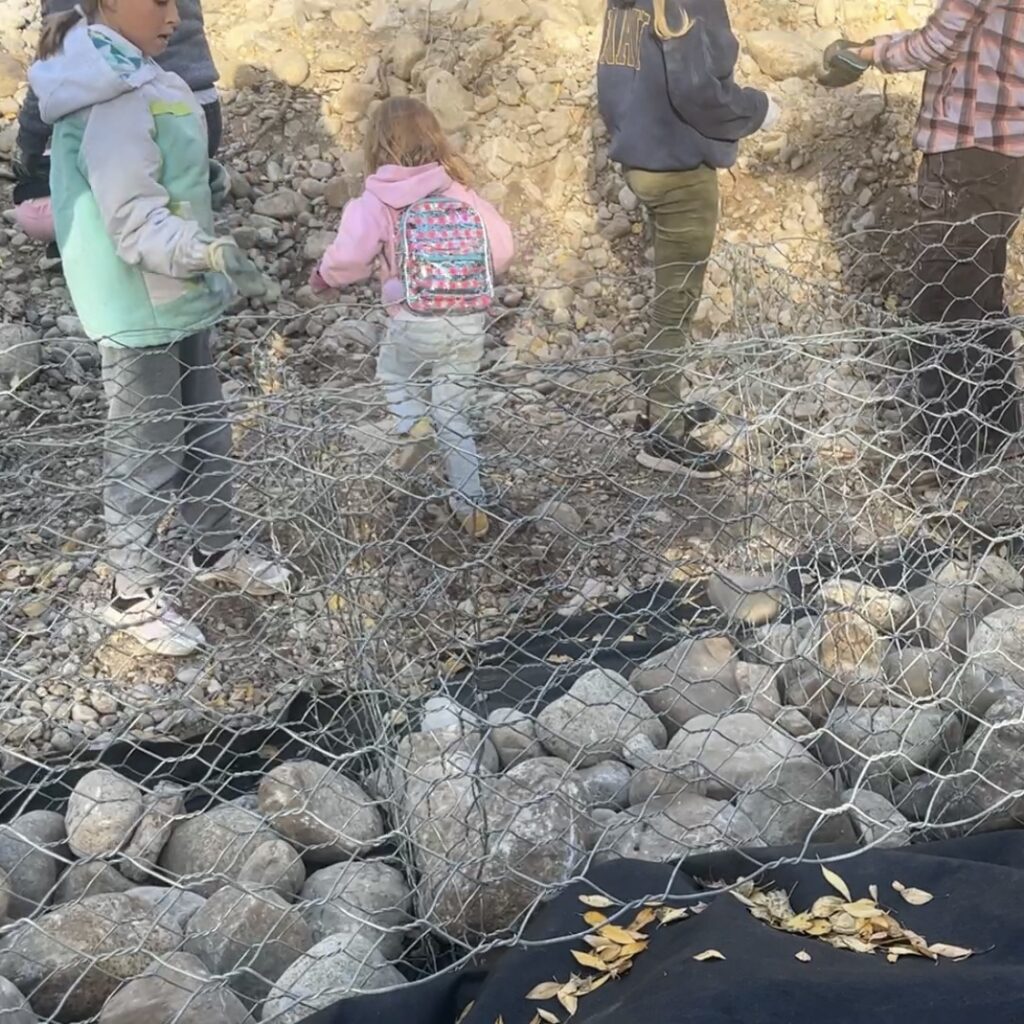
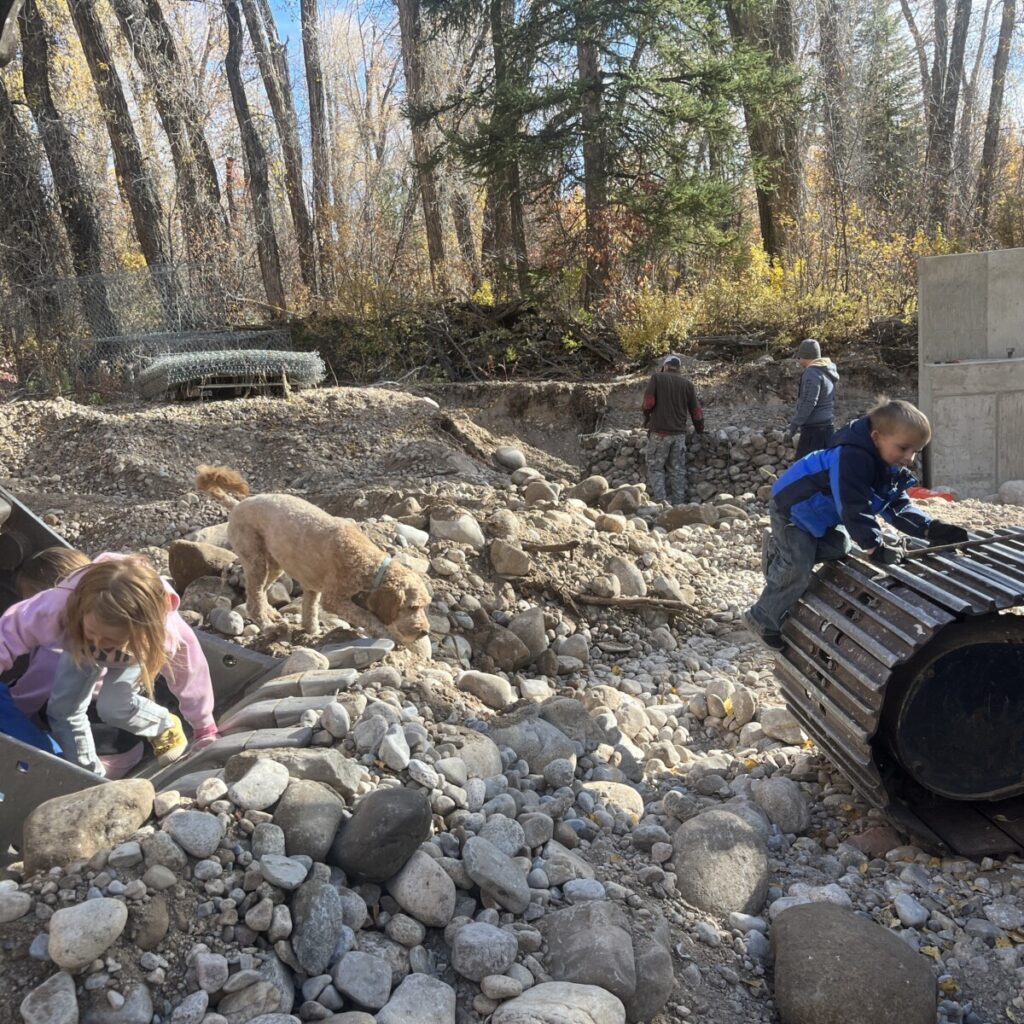
Step 5: Place the huge steel beams across the foundation. These babies were 3 feet tall and 50 feet long! Getting them into place required the expert work of specialized equipment and finesse.
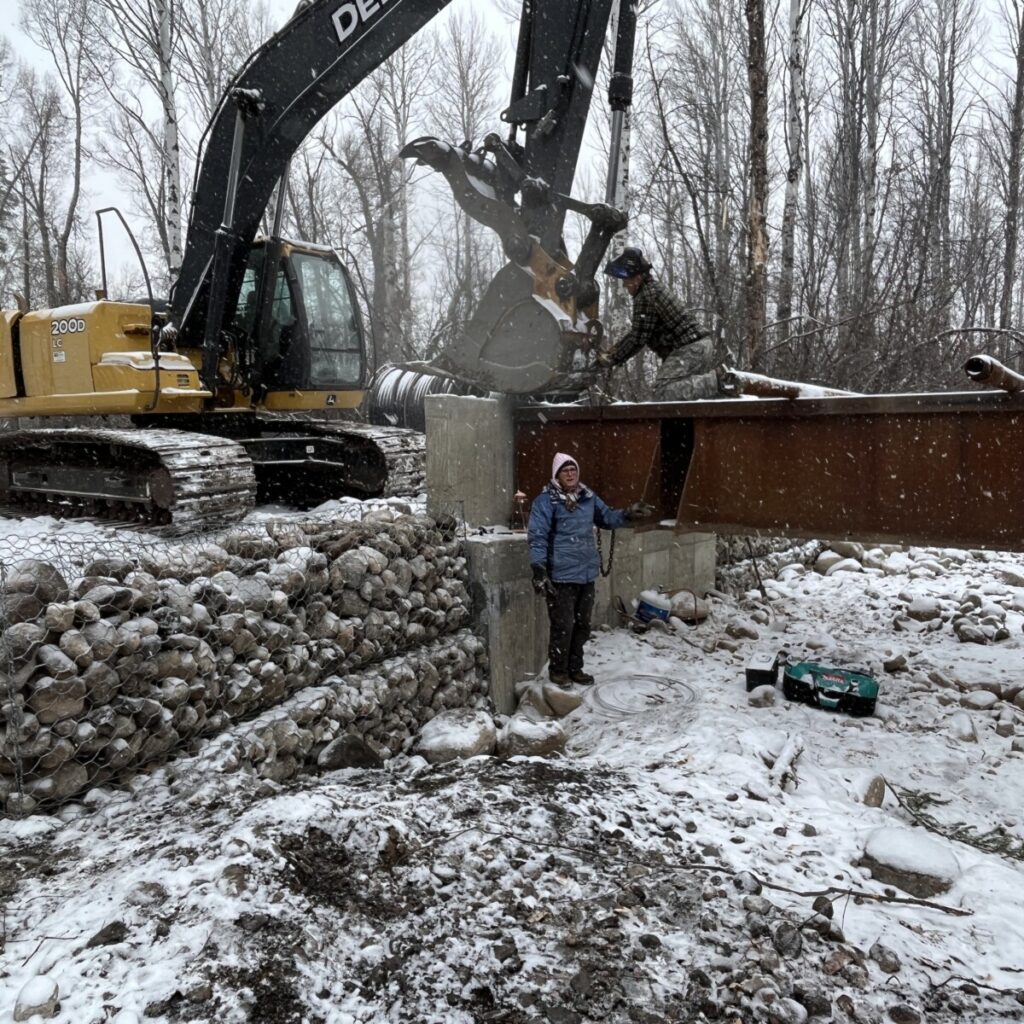
Step 6: Weld everything together to make sure that nothing falls apart.
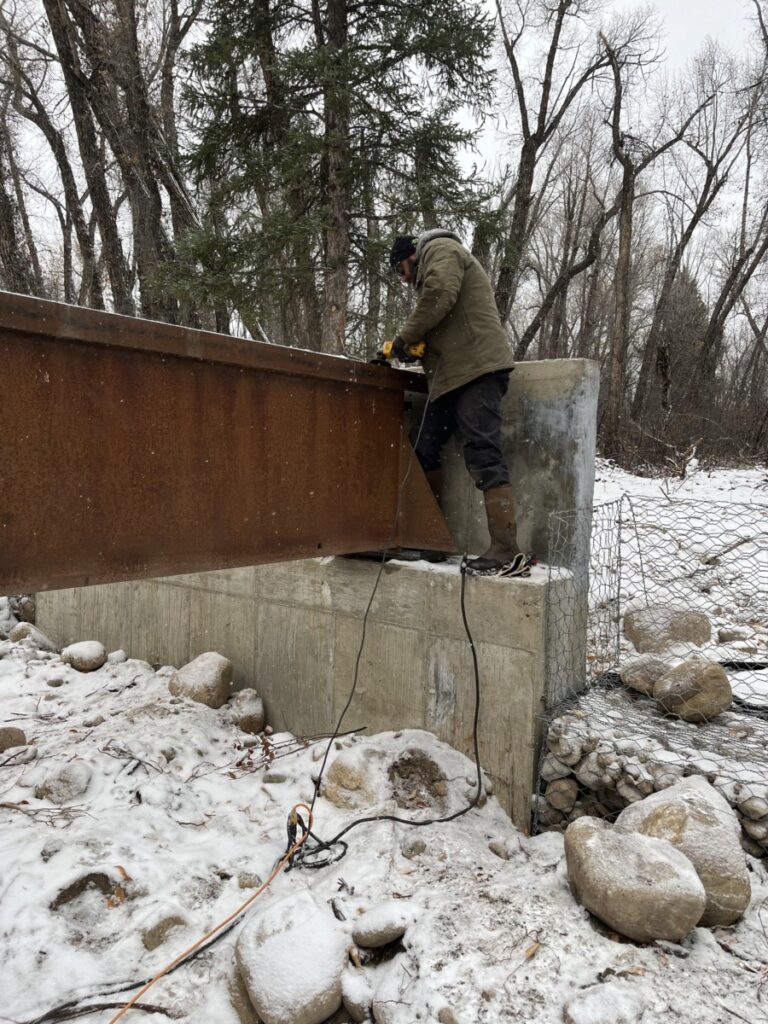
Step 7: Carefully place and align over 100- 4 inch steel pipes to form the deck for the bridge where we would actually be driving. This was much larger than I had anticipated. Who knew that to get over a moderately sized creek you would need such an enormous bridge!
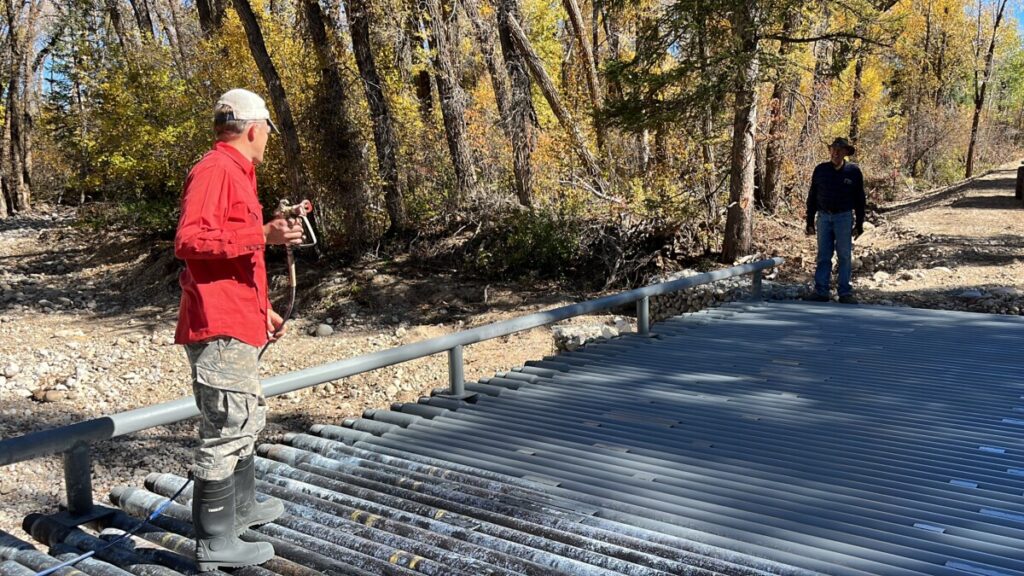
Step 8: Paint and beautify the surrounding to make it look like the bridge has always been there, then drive across and enjoy the fruits of your labors (or your family’s labors).

Not too bad, right? Do you feel like you could go find a beautiful forest creek and build a bridge across it? I have given you all of the necessary steps, right?
We just finished last weekend and I’ve been reflecting on the entire process and the parallels to my vision therapy journey. Building the bridge seemed pretty simple in my mind at the very beginning and I grossly underestimated the complexity involved with each step.
From the outside, vision therapy for strabismus seemed pretty simple too. Just get some red green glasses, wake up that weak eye and boom! You have stereo vision!
If only it were that simple.
Bridging the Gap: What In-Office VT Offers that Can’t be Gained Through DIY Therapy
If you already see the point I’m making, but are wondering where to start, head over HERE and fill out the form and I will send you personal vision therapy recommendations in your area for free (no, I don’t get a kick back from the offices, if only!).
To fully understand why DIY vision therapy is not going to create great success, read on.
Detailed Planning
Building the bridge required various permits and years of planning. Similarly, before in-office vision therapy even begins, the optometrist will spend several hours diving into the depths of your brain and eyeballs figuring out how your visual system works. Using the information discovered, detailed plans are created based on you.
Just jumping into some random eye exercise is like showing up to the job site and guessing where the bridge should go. You could be starting with the railing and skipping the foundation which makes for a terrible bridge, and potential future vision issues.
Plans are good.
Foundation
What creates the foundation in vision therapy? It’s all the basic eye skills like tracking, peripheral, saccades, memory, perception and even primitive reflexes (plus a whole lot more). None of these things, alone, will make your eyes straight, but without starting there and building that strong foundation, the stereo vision and straight eyes are not likely to follow.
Remember the foundation on our bridge? It was massive and after completion it is barely even visible. The bridge is the fusion, stereo, depth, and straight eyes, but without all the invisible visual skills that form the foundation, the bridge has nowhere to sit.
Specialized Knowledge
My brother and dad, both engineers played a critical role in understanding the intricacies of designing and constructing the bridge. Without their skills and knowledge, we may have had a bridge more like this one.
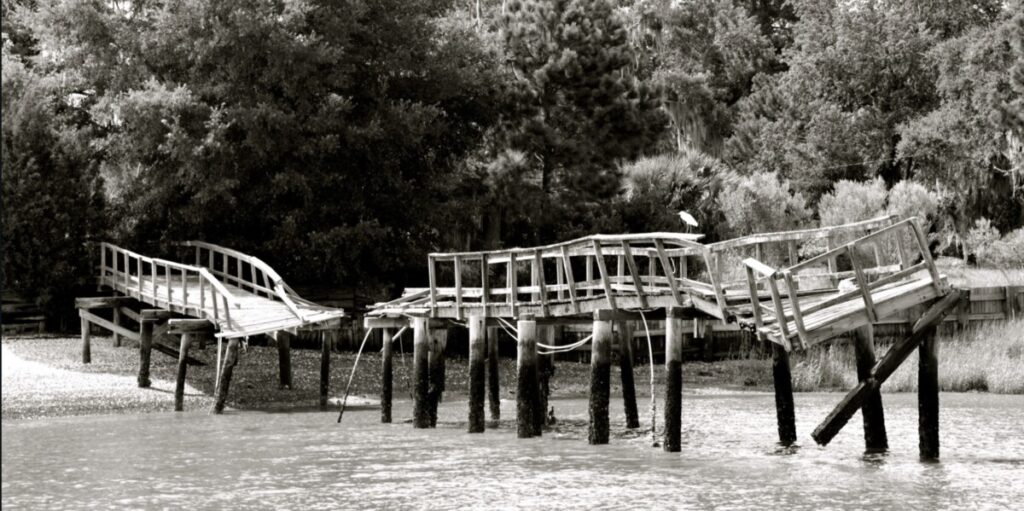
Some people compare vision therapy to physical therapy for the eyes…in fact, I’m pretty sure I’ve made that comparison in the past. They think that if they just do some basic eye exercises their muscles can become stronger and everything will fall into place. But it is so much deeper than that. The neurology involved is complex and strabismus must be approached with caution and care.
Being led by a professional who has the knowledge and expertise is going to be the difference between a success and a failure.
Continuous Adjustments
While building the bridge, we met with many unforeseen challenges. Work-arounds were created and plans were adjusted and I can promise you I had nothing to offer when we reached those impasses. I simply didn’t have the expertise in bridge building to problem solve. I could almost keep up when things were moving smoothly, but those parts never lasted too long.
With a developmental optometrists and vision therapist assisting you on your way to stereo vision, they are there for the roadblocks. They know how to problem solve vision issues with strabismus and lazy eye in ways we can’t comprehend and their fine-tuning, collaboration and expertise are incredibly valuable.
There will be valleys during your vision journey and trouble shooting during those times is made possible through the guidance of a specialist.
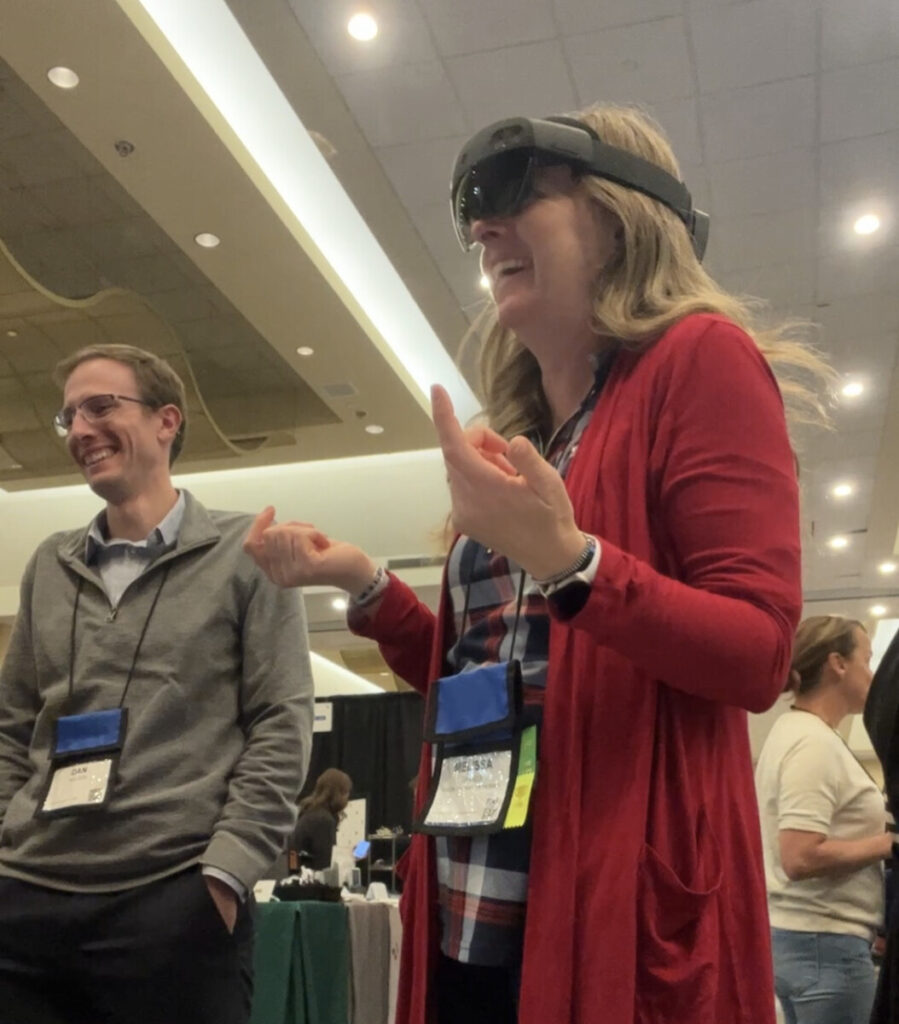
I’m Sorry
I’m sorry that I can’t give you better news. I wish that the answer was for me to create an amazing all-in-one course for you to do vision therapy from the comfort of your own home for a fraction of the price, but deep down, I know that that wouldn’t give you the success you’re looking for.
Although my Mastering Peripheral course is a great place to start, it only scratches the surface…more the foundation…of what is needed to overcome strabismus and learn to use both eyes together for stereopsis. There are things you can do to improve your general vision, but if you want that Stereo Sue moment, it is going to take more.
If you are willing to jump in with both feet and put your trust in a vision therapy office, I can promise that you will see major changes in your life. You won’t be the same person at the end. You will have an amazing bridge that leads to a whole new world of seeing like you never have before.
If you need help finding an office or would like to meet over zoom, head over HERE for tons of resources!
In conclusion, let us remember the wise words of Dr. David Cook at the beginning of his amazing book full of eye exercises, THE SHAPE OF THE SKY, “Those who have successfully used an instruction manual to build a house, construct a nuclear weapon, or build a time machine [or bridge] should be able to make do with this manual. For the rest of us, professional care is advised.”
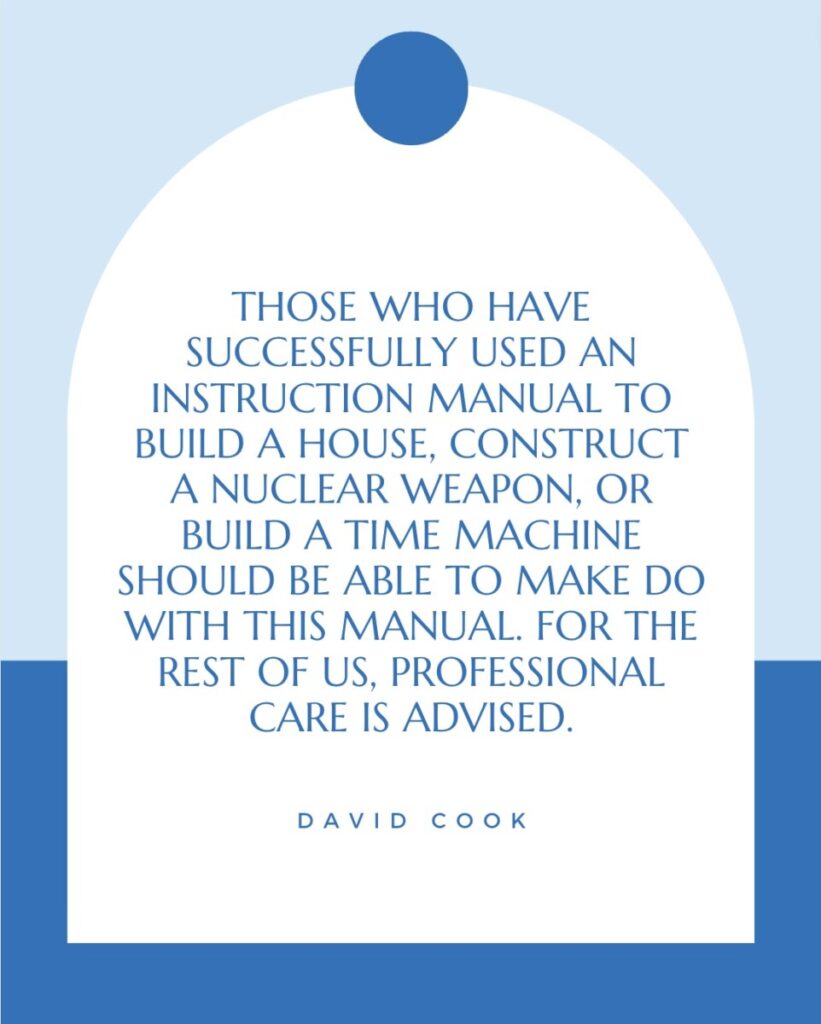
There may be people out there who can figure out how to do their own therapy with enough research and time, but that is probably not you and probably not me. There is so much we can do to improve our vision, but it is best done with the guidance of those who have the expertise.
Reach out with any questions! melissa@strabismussolutions.com
